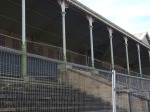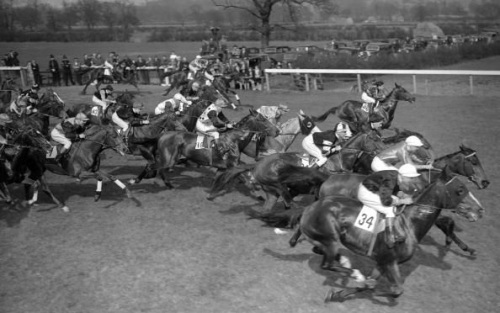The Lincoln Grandstand is a proud building. Standing alone, it’s a time capsule. There’s no real reason for it being there – it’s used as a centre of the community, but there are probably more suitable venues.
No. The Lincoln Grandstand is a monument to history. Simply, it stands to tell us what once was. We look at it and we can imagine the cheering. We look beyond it and we can imagine the gentle rumble of the horses, charging from afar. It is a snapshot of time.
There will be few in the Lincoln area that has a greater interaction with the building these days than Duncan Hall. As the Warden of the West Common in which the Grandstand guards so fiercely, he works in and around the building everyday. Typically, he’s grown an attachment to the Lincoln folly: “Having worked in the area I’ve obviously got an affinity with the place and I’ve become quite proud of the building, regardless of what state it’s in. It’s a definitive feature, and it gives the Common plenty of character.”
Indeed, Hall is quick to point out the legacy that the Grandstand provides: “It gives us memories of the past, which I think is good,” says Hall. “You know, you see the children using the building and they probably have no idea about its former uses, or about the hundreds of stories that the building undoubtedly holds. The crowds, the excitement – all the highs and lows that people must have had there are all wrapped up in that one building. It might not seem like it just standing there next to the road, but it represents a big part of Lincoln’s heritage, and I for one am immensely proud of it.”
Nowadays, you’d be forgiven for thinking that the Grandstand lies dormant. Unused and unloved, the barriers that litter the steps show a derelict monument. “Obviously, from afar, when you view it with the fences up against the stand, it looks almost derelict, but the truth is, the actual building is in decent condition,” says Hall. “It’s unfortunate that the back of the grandstand faces away from the road, because that still looks absolutely fantastic.”
Obviously, having worked around the area for so long, Hall is keen for the Grandstand to be restored: “It would be great to see it restored to its former glory, though. I’d love to see it with the crowds cheering again, and the horses charging past. It is, after all, what it was intended for.”
Certainly, the return of horse-racing would bring a rejuvenation of the area’s sporting legacy and immense excitement to the city of Lincoln.
However, the Grandstand is currently being used as a community centre, providing a home for numerous clubs, groups and societies. It’s something that Hall hasn’t missed, and he thinks that it’s new role is important for the local area: “I think as it is now, the Grandstand is playing a role in the community. The same goes for the Common in general, which is a great place for people to walk, to come and play sports. As a space, it’s a really good thing for Lincoln to have.”
So with renewed talks of a return of horse-racing to the area and a renovation of the Grandstand, how does Hall feel about the potential loss of a valuable community centre? “It’d be a shame to lose that community aspect if racing did return. Don’t get me wrong, I think the return of horse-racing would be fantastic and bring a lot of excitement to the area. But I would hope that we’d be able to keep something for the public in terms of a space to come and enjoy, and to use.”
But, the truth is, whether it’s used as a community centre or as part of a new racecourse for Lincoln, Duncan Hall is happy just to have the building there. Proudly standing come wind, rain or shine, one thing is for certain – the Grandstand isn’t going anywhere and it will continue to represent a bygone age. People will still be able to look on and wonder what happened there many years ago. And that’s something that everyone, Duncan Hall included, can be thankful for.
by Andrew Boyers







